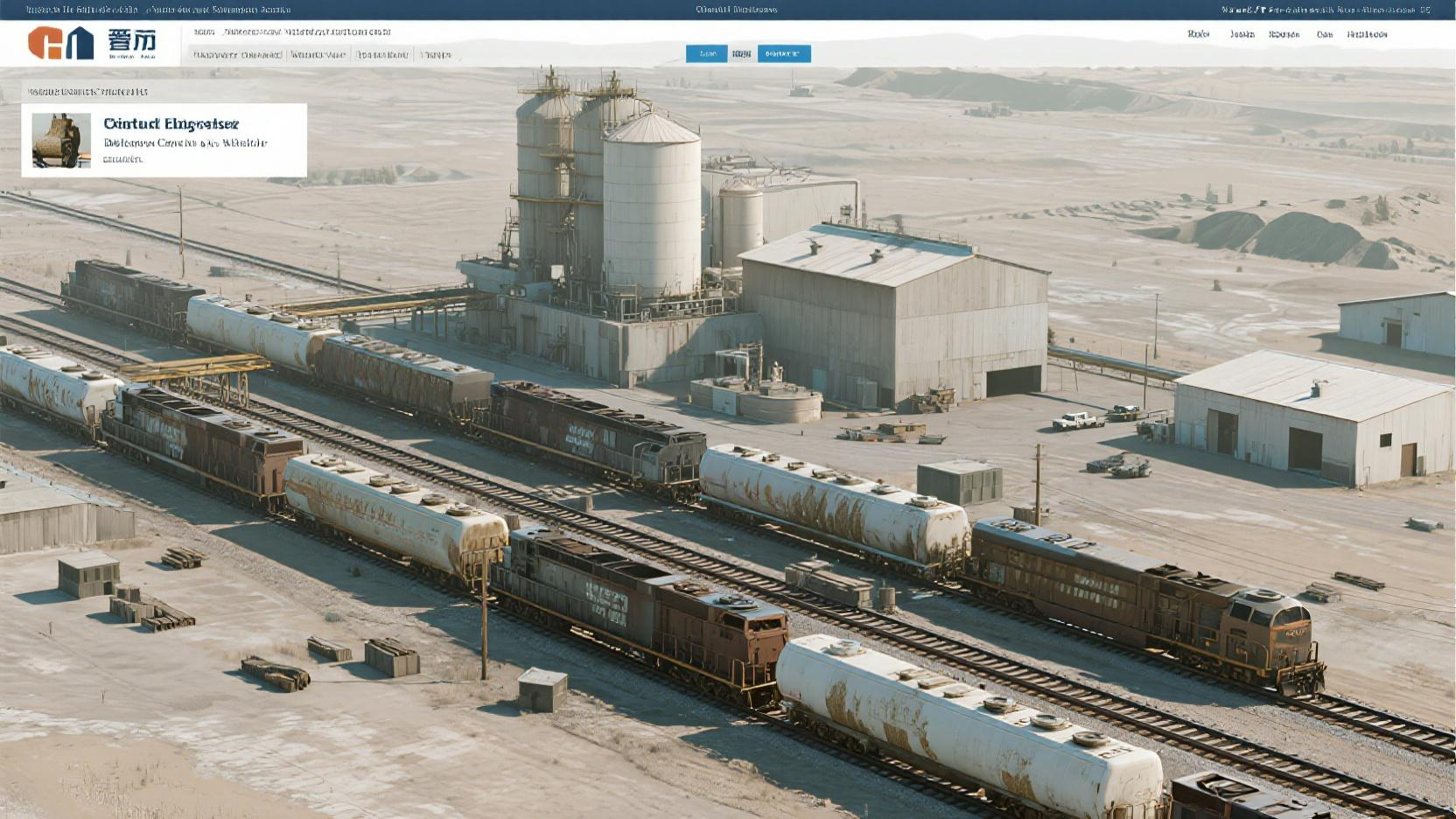Image Source: unsplash
Post-M&A corporate integration often involves exploring financing challenges in post-M&A corporate integration that demand immediate attention. Addressing these issues ensures operational efficiency, regulatory compliance, and the realization of anticipated synergies. Companies that successfully integrate post-M&A achieve a synergy realization rate of over 83%, while less successful acquirers capture less than half of the expected benefits. Neglecting financial integration can lead to missed cost savings, cultural misalignment, and lost market share opportunities. Strategic financial planning becomes essential to mitigate these risks and align the merged entities toward a unified financial vision.
Key Takeaways
- Solving money problems early after a merger helps things run better.
- Combining money systems needs good planning and training for correct data.
- Clear communication builds trust and keeps everyone updated during changes.
- Using smart financial tools makes work easier and fixes data mistakes.
- Having backup plans for money problems keeps things steady and smooth.
Key Financing Challenges in Post-M&A Corporate Integration
Systems and Data Consolidation
Merging financial systems and ensuring compatibility
Post-M&A integration often requires merging financial systems from two distinct entities. Companies face challenges such as system compatibility issues, data integration complexities, and regulatory compliance. These obstacles can disrupt operations if not addressed promptly.
The primary challenges companies face when consolidating financial systems and data post-M&A include system compatibility issues, data integration complexities, regulatory compliance, and the need for effective change management and training.
To overcome these hurdles, organizations must align financial systems, ensuring seamless communication between platforms. A structured approach, including effective change management and employee training, can mitigate risks and enhance compatibility.
Maintaining data accuracy and consistency during integration
Maintaining accurate and consistent data is critical during financial integration. Errors or inconsistencies can lead to flawed decision-making and compliance risks. Best practices include:
- Regular data audits and validation to identify and correct errors.
- Clear data entry policies to standardize processes across teams.
- Employee training on data management to ensure proper handling.
These measures help organizations maintain data integrity, ensuring a smooth transition during the integration process.
Adjusting Financial Processes
Aligning accounting standards and reporting frameworks
Aligning accounting standards is essential for transparency and compliance. Merging entities often operate under different frameworks, requiring reconciliation of financial statements and standardization of reporting practices. Companies typically:
- Form an integration team with financial experts.
- Reconcile financial statements to resolve policy differences.
- Standardize the chart of accounts for consistency.
- Integrate accounting systems to meet the combined entity’s needs.
- Produce new financial reports reflecting the unified structure.
A CFO plays a pivotal role in overseeing these adjustments, ensuring the new organization meets its financial goals.
Managing liquidity and cash flow during the transition
Liquidity management becomes a priority during post-M&A integration. Companies must monitor cash flow closely to avoid disruptions. Streamlining workflows and eliminating redundant tasks can improve efficiency. For example, a consultant helped a client reduce their month-end close timeline by optimizing processes, demonstrating the importance of proactive financial management.
Adapting Financial Roles and Responsibilities
Redefining leadership roles and team structures
Mergers often necessitate redefining financial leadership roles and team structures. Companies can establish an Integration Management Office (IMO) or appoint an integration leader to oversee the process. Best practices include:
- Sharing regular updates about leadership changes and new procedures.
- Hosting Q&A sessions to address employee concerns.
- Conducting cultural assessments to promote inclusivity.
These strategies ensure a smooth transition and retain key talent during the integration phase.
Addressing cultural differences in financial management
Cultural differences in financial management can create friction during integration. For example, differing values and norms may lead to resistance or misinterpretation. Solutions include:
| Solution Type | Description |
|---|---|
| Cultural Due Diligence | Assess the cultural fit between the two companies to ensure smooth integration. |
| Assess Cultural Differences | Conduct a thorough assessment of the cultural differences to understand values and norms. |
| Develop a Cultural Integration Plan | Create a plan to bridge cultural differences and foster a unified culture through team-building. |
| Promote Change Management | Implement initiatives to help employees adapt to the new culture through training and workshops. |
By addressing these differences proactively, organizations can foster collaboration and achieve financial alignment.
Managing Regulatory Compliance
Navigating differing financial regulations between entities
Post-M&A integration often involves navigating complex regulatory landscapes, especially when the merging entities operate in different jurisdictions. A thorough regulatory assessment is essential to identify and address compliance requirements. Companies should establish a dedicated compliance team to oversee this process and ensure adherence to local and international regulations. Regular audits can help identify potential compliance issues early, reducing the risk of penalties or operational disruptions.
Tip: Proactively engaging with regulatory authorities and seeking their guidance can streamline the compliance process and build trust.
Ensuring compliance with local and international standards
Adhering to both local and international financial standards, such as IFRS, enhances transparency and credibility. IFRS compliance allows for better comparability of financial information, improving investor confidence and facilitating global market access. However, transitioning from local accounting standards to IFRS can be complex. Companies must adjust existing policies, coordinate across subsidiaries, and integrate technology to meet these standards.
To ensure consistent compliance:
- Conduct a detailed review of IFRS requirements and their implications.
- Train financial teams to understand and implement the standards.
- Monitor subsidiaries to maintain uniformity in reporting practices.
These steps help organizations align with global standards while maintaining operational efficiency.
Identifying and Managing Hidden Costs
Uncovering unexpected liabilities and integration expenses
Hidden costs can significantly impact the total cost of acquisition (TCoA) and the success of an M&A deal. Common expenses include IT system integration, employee training, legal compliance, and redundancy payouts. Post-merger integration often requires an additional investment of 5-15% of the deal’s value. Underestimating these costs can lead to operational disruptions and hinder integration success.
Organizations should conduct thorough financial impact assessments to identify potential expenses. This process helps quantify costs and analyze their influence on cash flow and profitability. By understanding these financial implications, companies can set realistic expectations and allocate resources effectively.
Budgeting for unforeseen financial challenges
Preparing for unforeseen financial challenges is critical during post-M&A integration. Establishing contingency reserves provides a financial buffer, ensuring stability during unexpected disruptions. Regular monitoring and reporting systems enable companies to track integration progress and expenditures. These systems allow for timely corrective actions, keeping the integration process on track financially.
Note: Allocating resources for contingencies demonstrates proactive financial planning, which is essential for navigating the complexities of post-M&A integration.
The Role of Financial Experts in Post-M&A Corporate Integration
Conducting Comprehensive Financial Assessments
Evaluating the financial health of merging entities
Financial experts play a pivotal role in assessing the financial health of merging entities. Their initial evaluations determine the financial impact of the merger and identify areas requiring immediate attention. These professionals lead due diligence processes, ensuring a thorough review of both organizations’ financial records. This approach uncovers potential risks, such as hidden liabilities, and highlights opportunities for cost savings or revenue growth.
Key responsibilities include:
- Conducting financial due diligence to assess risks and opportunities.
- Managing project planning and tracking finance-related tasks across departments.
- Identifying integration expenses, such as technology upgrades and staff training.
By addressing these aspects, financial experts lay the groundwork for informed decision-making and a smoother integration process.
Identifying risks, opportunities, and synergies
Identifying risks and opportunities is essential for maximizing post-M&A synergies. Financial experts analyze potential liabilities, such as redundancy payouts or compliance costs, to estimate the total financial burden. They also pinpoint areas where the merged entity can achieve operational efficiencies or revenue growth. This comprehensive assessment ensures that the integration process aligns with the organization’s strategic goals.
Strategic Financial Planning
Developing a detailed financial integration roadmap
A well-structured financial integration roadmap is critical for guiding the post-M&A process. This roadmap includes clear objectives, a communication strategy, and a timeline with key milestones. It also outlines roles and responsibilities to ensure accountability.
| Key Component | Description |
|---|---|
| Clear objectives | Define specific goals and what the merged company aims to achieve. |
| Communication strategy | Develop a plan to keep stakeholders informed and engaged throughout the process. |
| Critical integration activities | Identify and prioritize tasks such as process alignment, IT integration, and financial consolidation. |
| Roles and responsibilities | Clearly assign responsibilities to individuals and teams, ensuring accountability. |
| Timeline | Establish a timeline with key milestones and deadlines. |
| Risk assessment and mitigation | Identify potential risks and establish strategies to address them. |
An accounting integration plan is also vital for merging financial systems. Without it, finance leaders may face inaccuracies and incomplete reporting. This plan helps identify challenges early, ensuring a seamless transition.
Setting realistic goals, timelines, and milestones
Setting achievable goals and timelines ensures that the integration process remains on track. Financial experts establish milestones to measure progress and adjust strategies as needed. This structured approach minimizes disruptions and keeps the organization focused on its long-term objectives.
Implementing Financial Integration Solutions
Streamlining financial systems and processes
Streamlining financial systems is essential for operational efficiency. Solutions like middleware tools, such as UniFi, enable seamless data connections and reduce integration costs. NetSuite Integration supports API connections, simplifying workflows and enhancing system compatibility. A unified dashboard links operational and financial data, providing real-time insights for better decision-making.
| Solution | Description | Benefits |
|---|---|---|
| Middleware (UniFi) | A configurable data connector builder for seamless connections and data transformations. | Reduces integration costs and project timelines. |
| NetSuite Integration | Supports connections with any software using APIs and provides an ODBC connector. | Enhances orchestration of complex integrations. |
| Unified Dashboard | Links operational and financial data for a holistic view. | Improves decision-making with real-time data. |
These tools help organizations achieve financial alignment while minimizing disruptions.
Monitoring progress and adapting strategies as needed
Monitoring progress ensures that the integration process stays aligned with organizational goals. Financial experts establish clear metrics, such as key performance indicators (KPIs), to track progress. Regular evaluations and cross-functional coordination foster collaboration and identify bottlenecks.
- Define KPIs to measure integration success.
- Conduct regular assessments to gather feedback.
- Adapt strategies based on new information.
- Promote collaboration across departments for alignment.
- Embrace continuous improvement to refine processes.
This iterative approach ensures that the integration remains flexible and responsive to emerging challenges.
Actionable Strategies for Overcoming Financing Challenges

Image Source: pexels
Prioritizing Clear and Effective Communication
Establishing transparent communication channels
Clear communication channels are essential for aligning stakeholders during post-M&A integration. Companies can establish a compelling narrative that outlines the vision and benefits of the merger. Platforms for open dialogue, such as virtual meetings or feedback sessions, encourage employees to voice concerns and ask questions. Regular updates on integration progress build trust and reduce uncertainty.
To ensure transparency, organizations should:
- Develop a structured communication plan targeting key audiences.
- Train leadership to deliver consistent and transparent messages.
- Use collaborative tools for real-time updates and engagement.
These practices foster trust and ensure all stakeholders remain informed throughout the integration process.
Keeping all stakeholders informed and aligned
Keeping stakeholders informed requires systematic updates and proactive engagement. Companies should involve key customers early in the transition to reassure them of continued service quality. Cultural integration workshops can also promote understanding between merging teams, ensuring alignment.
Tip: Providing timely updates to external stakeholders, such as investors and customers, enhances credibility and strengthens relationships.
Leveraging Financial Integration Technology
Utilizing advanced tools and software for integration
Advanced tools simplify financial integration by streamlining workflows and ensuring data accuracy. Companies often integrate ERP or CRM systems to align transactional workflows. A phased approach to data migration minimizes disruptions and maintains data integrity.
Key tools include:
- Due Diligence Management Platforms: Facilitate secure file sharing during integration.
- Financial Modeling Software: Support the creation and analysis of financial models.
- Integration Management Tools: Track workflows and ensure task completion.
These technologies enhance efficiency and reduce the complexity of financial integration.
Automating repetitive tasks to enhance efficiency
Automation plays a crucial role in reducing manual errors and saving time. Tasks like data reconciliation, report generation, and compliance checks can be automated using advanced software. This approach allows financial teams to focus on strategic activities, accelerating the integration process.
Note: Automation not only improves accuracy but also reduces operational costs, making it a valuable investment during post-M&A integration.
Strengthening Financial Project Management
Assigning dedicated teams to oversee financial integration
Dedicated teams ensure accountability and streamline the integration process. Organizations should assign experienced professionals to oversee critical tasks, such as data consolidation and compliance management. A well-structured project plan with clear milestones and task dependencies keeps the team focused and organized.
Tip: Building cross-functional teams fosters collaboration and ensures alignment across departments.
Regularly reviewing progress and addressing bottlenecks
Regular progress reviews help identify and resolve bottlenecks early. Financial project managers should establish key performance indicators (KPIs) to measure success and adapt strategies as needed. Clear communication across departments ensures that all teams work toward shared goals.
By implementing these strategies, companies can navigate the complexities of financial integration effectively, ensuring a seamless transition.
Preparing for Contingencies
Developing a robust contingency plan for financial disruptions
A robust contingency plan is essential for mitigating financial disruptions during post-M&A integration. Organizations must prepare for potential risks that could derail the integration process. Best practices for developing such a plan include:
- Including immediate activation protocols and long-term recovery strategies.
- Incorporating preventive controls to reduce the likelihood of crises.
- Regularly updating the plan to address emerging risks and refine strategies.
- Testing the plan to ensure effective execution and team readiness.
The plan should also identify possible risks and categorize responses into risk management, mitigation, and transfer. Defining trigger points for activating the disaster recovery plan ensures timely decision-making. Each step in the response process must be detailed, including responsible individuals and timelines. These measures enable organizations to respond swiftly and effectively to financial disruptions, minimizing their impact on operations.
Allocating resources to address unexpected challenges
Allocating resources effectively is critical for addressing unforeseen financial challenges during integration. Conducting a thorough financial impact assessment helps organizations understand integration costs, such as technology upgrades, staff training, and legal compliance. This assessment quantifies potential expenses and evaluates their effects on cash flow and profitability, enabling informed decision-making.
To prepare for unexpected challenges, organizations should:
- Begin integration planning during the due diligence phase to identify potential risks early.
- Establish contingency reserves to manage unforeseen expenses.
- Implement regular monitoring and reporting systems to track progress and expenditures.
A recent PwC study highlights that successful M&A organizations develop comprehensive value creation plans early in the deal process. These plans, which include synergy targets and execution strategies, significantly improve the likelihood of achieving financial goals post-acquisition. By proactively allocating resources and maintaining financial flexibility, companies can navigate uncertainties and ensure a smoother integration process.
Post-M&A corporate integration presents numerous financing challenges, including systems consolidation, process adjustments, and regulatory compliance. According to Deloitte’s 2023 M&A Trends Report, 70% of executives identified financial integration within the first 100 days as critical to deal success, yet only 45% executed it effectively. This highlights the importance of addressing these challenges promptly.
Financial experts play a pivotal role in ensuring smooth transitions. They guide companies through integration steps, conduct financial assessments, and execute tasks like data reconciliation. Their expertise minimizes risks and aligns integration activities with strategic goals.
Actionable strategies, such as leveraging technology, fostering communication, and preparing contingency plans, are essential for overcoming obstacles. Addressing these financing challenges ensures a seamless integration process, unlocking the full potential of the merger.
FAQ
What is the most critical financial challenge during post-M&A integration?
The most critical challenge is aligning financial systems and processes. Merging entities often use incompatible systems, leading to inefficiencies. Addressing this requires careful planning, robust technology, and expert oversight to ensure seamless integration and operational continuity.
How can companies manage hidden costs during integration?
Organizations should conduct thorough financial assessments during due diligence. Identifying potential liabilities, setting contingency reserves, and monitoring expenses regularly help mitigate the impact of unforeseen costs. Proactive planning ensures financial stability throughout the integration process.
Why is regulatory compliance crucial in post-M&A integration?
Regulatory compliance ensures the merged entity adheres to local and international standards. Non-compliance risks include penalties, reputational damage, and operational disruptions. A dedicated compliance team and regular audits help organizations navigate complex regulations effectively.
How do financial experts contribute to successful integration?
Financial experts evaluate the financial health of merging entities, identify risks, and develop integration roadmaps. Their expertise ensures accurate data consolidation, compliance, and alignment with strategic goals. They play a pivotal role in minimizing disruptions and achieving synergies.
What role does technology play in financial integration?
Technology streamlines financial processes, enhances data accuracy, and reduces manual errors. Tools like ERP systems, middleware, and automation software improve efficiency and enable real-time decision-making. Leveraging advanced technology accelerates the integration process and ensures long-term success.












